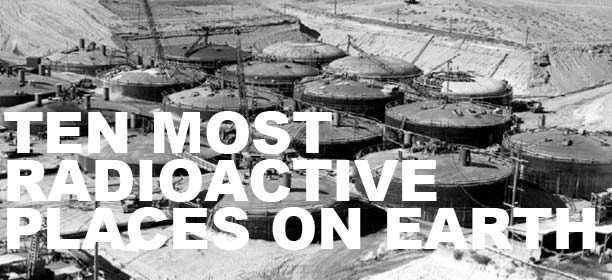Fukushima Daini Nuclear Power Plant
The effects of the Fukushima earthquake in Japan is said to be the longest-lasting nuclear danger in the world. Considered to be the worst nuclear accident since Chernobyl, the incident caused the meltdown of three reactors allowing for a severe radiation leak detected 200 miles away from the plant.
Chernobyl Nuclear Power Plant
A heavily contaminated place, Chernobyl is home to one of the world’s worst nuclear accidents. Through the years, the radiation accident in Chernobyl has affected six million people in the area and is projected to cause anywhere between 4,000 to 93,000 deaths.
Zapadnyi Mining and Chemical Combine
Mailuu-Suu is considered as one of the most polluted sites in the world. Unlike other radioactive places, this place does not derive its radiation from nuclear bombs or power plants but from large-scale uranium mining and processing activities, contributing to about 1.96 million cubic meters of nuclear waste in the area.
The Polygon
The Polygon in Kazakhstan is most famous for its atomic bomb project. This uninhabited place was converted into a facility where the Soviet Union detonated its first nuclear bomb, which currently holds the record for the largest concentration of nuclear explosions in the world. Some 200,000 are currently suffering from the effects of this radiation.
Siberian Chemical Combine
The Siberian Chemical Combine accounts for about 125,000 tons of solid waste contaminating ground waters in the area. A study also shows that wind and rain carry off these contaminants to wildlife, causing high levels of mortality among animals.
Sellafield Power Plant
Before it was converted into a commercial territory, Sellafield, UK used to be a plutonium production facility for nuclear bombs. Today, around two thirds of the buildings that can be found in Sellafield are considered radioactively contaminated. This facility releases about eight million liters of contaminated waste every day, contaminating landscapes and causing deaths among nearby dwellers.
Mayak Production Association
Mayak, Russia has been home to a massive nuclear plant for decades. It all began in 1957, when approximately 100 tons of radioactive waste was released into the environment by a fatal accident that led to an explosion contaminating a massive area.
The Somali Coast
Some claim that the soil of the unprotected Somalian coast has been used by the mafia for the burial of nuclear waste and toxic metals which includes 600 barrels of toxic materials. True enough, when a tsunami hit the coastline in 2004, several decades-old rusting barrels were recovered.
In the Middle of the Mediterranean Sea
A syndicate controlled by the Italian mafia is believed to use the Mediterranean Sea as a dumping site for hazardous radioactive waste. It is said that about 40 ships of toxic and radioactive waste sail through the Mediterranean, leaving large amounts of nuclear waste in the oceans.
Hanford Nuclear Reservation Site
Hanford, an integral part of the US atomic bomb project, manufactured plutonium for the nuclear bomb that was eventually launched in Nagasaki, Japan. Though the plutonium supplies were decommissioned, about two thirds of the volume was left in Hanford, causing groundwater contamination.

